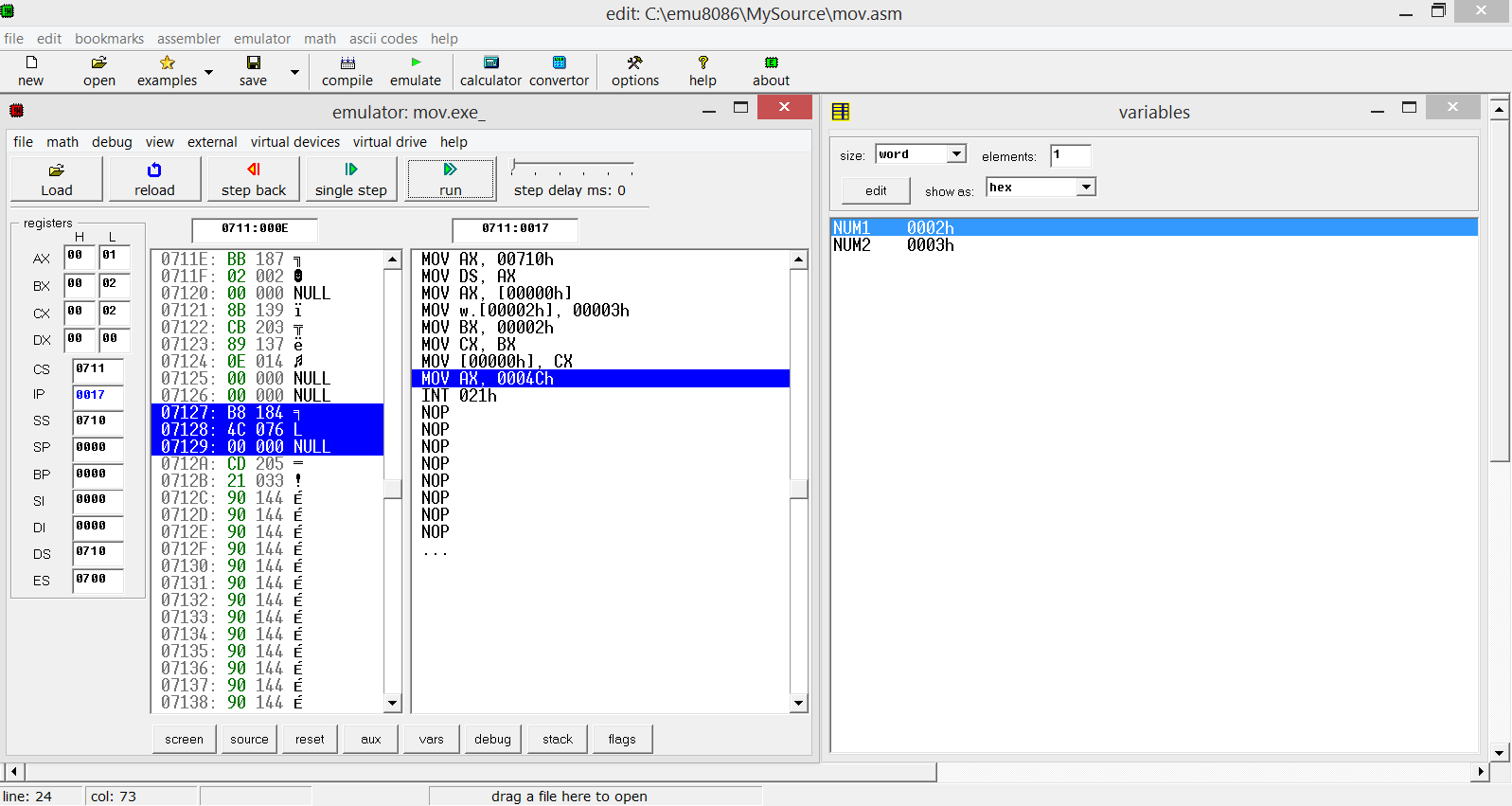
- #How to create a procedure file using emu8086 how to#
- #How to create a procedure file using emu8086 update#
- #How to create a procedure file using emu8086 code#
I am creating sample tables that will be used in the examples in this article. The stored procedure accepts the parameters and executes the T-SQL statements in the procedure, returns the result set if any. SQL Server stored procedure is a batch of statements grouped as a logical unit and stored in the database.
#How to create a procedure file using emu8086 how to#
Performance: The SQL Server stored procedure when executed for the first time creates a plan and stores it in the buffer pool so that the plan can be reused when it executes next time. In this article, we will learn how to create stored procedures in SQL Server with different examples. Use third-party tools like ApexSQL Decrypt to decrypt the encrypted stored procedures.
#How to create a procedure file using emu8086 code#
we can also encrypt the stored procedures while creating them so that source code inside the stored procedure is not visible. Security: Stored procedures reduce the threat by eliminating direct access to the tables. Reusable: Stored procedures can be executed by multiple users or multiple client applications without the need of writing the code again. Reduced network traffic: When we use stored procedures instead of writing T-SQL queries at the application level, only the procedure name is passed over the network instead of the whole T-SQL code. so, when we want to change the logic inside the procedure we can just do it by simple ALTER PROCEDURE statement. SQL Server Stored procedures eliminate such challenges by storing the code in the database. A near CALL is a call to a procedure which is in the same code segment as the CALL instruction. For example, If the T-SQL queries are written in the application and if we need to change the logic, we must change the code in the application and re-deploy it. There are two types of CALL instructions, near and far. Normally, this owner is ORACLE.Files created using FOPEN are always writable and readable using the UTLFILE subprograms, but non privileged users who need to read these files outside of PL/SQL may need access from a system administrator. It can be easily modified: We can easily modify the code inside the stored procedure without the need to restart or deploying the application. On UNIX systems, the owner of a file created by the FOPEN function is the owner of the shadow process running the instance. To understand differences between functions and stored procedures in SQL Server, you can refer to this article, Functions vs stored procedures in SQL Server and to learn about Partial stored procedures in SQL Server, click Partial stored procedures in SQL Server.

In this article, we learned how to create a single stored procedure to perform all operations using a single SP in SQL Server.In this article, we will learn how to create stored procedures in SQL Server with different examples. And check in the employee table with the following deleted data where id is 2.Ī single stored procedure can be used to select, add, update, and delete data from a database table. We will delete records from the table which has id=2.Ĭlick on the OK button. MasterInsertUpdateDelete -> right-click select Execute Stored Procedure.Ĭheck employee table with following updated data where id is 7. You will see a new row added to the database table. Now for insert, we fill the data in values in the required fields. MasterInsertUpdateDelete -> right click select Execute Stored Procedure. the use of MOV instruction: MAKECOM instruct compiler to make COM file. Now open object explorer and select storeprocedure MasterInsertUpdateDelete. This will create a new stored procedure in the database. press F5 to execute the stored procedure. The following SQL stored procedure is used insert, update, delete, and select rows from a table, depending on the statement type parameter. The DELETE statement is used to delete records from a database table.
#How to create a procedure file using emu8086 update#
The UPDATE statement is used to edit and update the values of an existing record. The INSERT statement is used to add new rows to a table. The SELECT SQL statement is used to fetch rows from a database table. Here, we create a stored procedure with SELECT, INSERT, UPDATE, and DELETE SQL statements. Stored Procedure for Select, Insert, Update, Delete Then execute a SELECT SQL query to display all records of the table. We can add new rows using an INSERT INTO SQL statement.

Let's take a look at a practical example. Here, we will see how to create select, insert, update, delete statements using stored procedures in SQL Server.


 0 kommentar(er)
0 kommentar(er)
